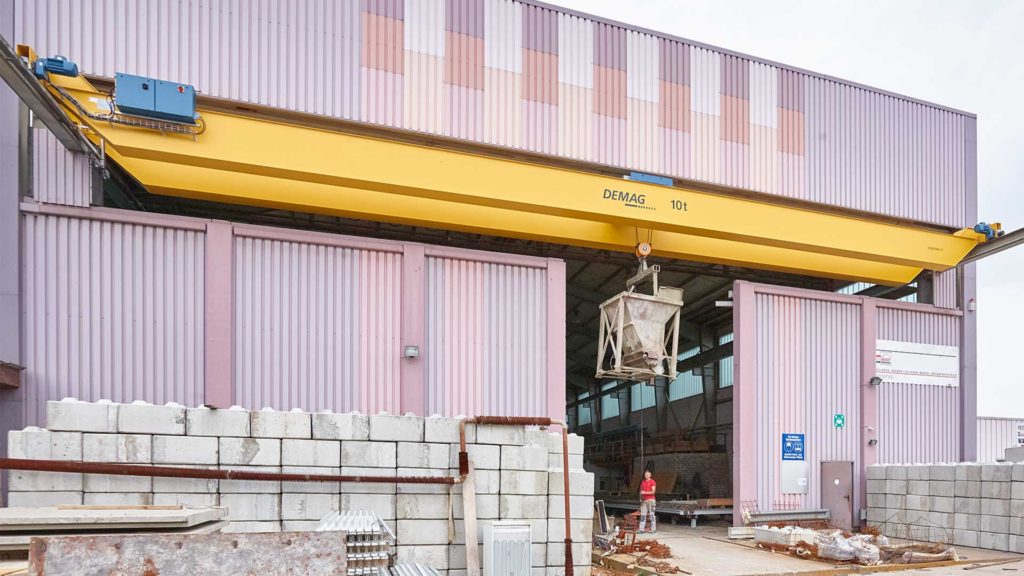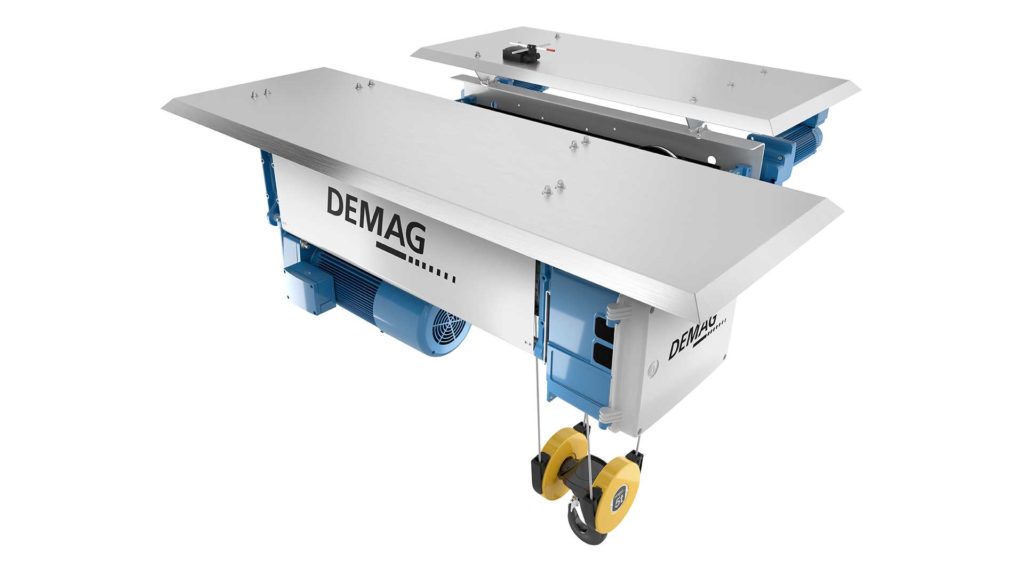When designing a crane for outdoor use, you must take extreme weather and location into consideration. Extreme weather can be sunlight, heat, cold, precipitation, wind, lightning and many other things. There are many details to consider when you will be using an overhead crane outside in any conditions. In this post, we are going to highlight some design considerations for your next overhead crane project that is used outdoors.

Overhead travelling cranes used outdoors are affected by weather elements and it’s important to understand how much time will be spent outside without cover. Depending on your final project plan, a crane can be used outdoors 100% of the time or less and can be stored inside in a building or not. If a crane is used and stored exclusively outdoors, there are different design considerations than one that may be stored indoors in a building or have dual usage indoors and outdoors.
Wind Force Calculations
As you are working with your crane manufacturer or dealer to design a crane to be used outdoors, a wind force calculation must be completed. Depending on where you are located geographically, you must consider what kind of weather comes through your area. A crane designed for outdoor use in Louisiana on the coast in a hurricane zone may have a different wind force calculation than one operating in Pittsburgh, far away from the coast. Wind effects the travel of the crane with and without the load. Cranes used outdoors usually need larger travel drives to overcome wind forces. Severe installations will require wind locks to secure the crane during high wind conditions. Designing the crane to meet the needs of the wind in your location is crucial.
Covers for Components

Covers designed to fit over the hoist, hoist motor, end truck motors and electrical panel are a must when a crane is used outdoors without a building cover. Protecting these components from rain, snow, and sun allows for a longer service life and added protection against the elements.
Additionally, we all know that electronics and water do not mix well. Electrical components on a crane can be affected by both temperature and moisture. It is important that these components can continue to function safely despite these elements. When the components of the crane, like the hoist and end truck motors, are designed for outdoor use, they include features like drain holes, special insulation, and special bearings and seals. Other electrical components, like festooning, should use a cable optimized for outdoor use. Festooning cable that uses rubber instead of PVC can have properties that optimize it for outdoor use. Depending on your location, electrical components need to meet different specifications. Always consult your local crane standards organization, like CMAA, for full details.
Steel and Other Metals
Temperature can have a huge impact on steel and electrical components. Generally, steel becomes more brittle as the temperature lowers. Thankfully, steel manufacturers can manufacture products that can be used in cold weather by changing the elements within the steel. When you are requesting a quote for a crane, it is important to make sure the crane manufacturer and dealer know that it will be used outdoors so materials can be optimized.
Whenever an overhead crane is going to be used outdoors, it’s important to take additional considerations into the final design. Wind, sun, high and low temperatures, rain, snow and other precipitation can affect the way the crane will work. These and many other considerations are taken into account when you work with your experienced crane manufacturer or crane dealer.
